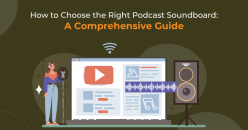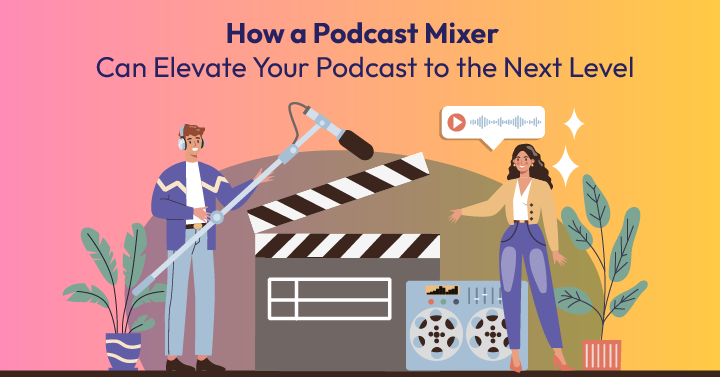
When you’re starting out making a podcast, the initial setup costs can be daunting. It might be tempting to skimp on any equipment that goes beyond the absolute basics. Resist that temptation. Sure, a podcast mixer isn’t as obviously necessary as headphones, microphones, or a computer. It is, however, something that almost all professional podcasters will possess. if you want to ensure you have high-quality audio and a greater degree of control over the sound of your podcast right from the get-go.
So, what is a mixer for podcasting, and why do you need one? Let’s dive in to understand the basics.
1. What Is a Podcast Mixer?
A podcast mixer, or more generally an audio mixer, is a way to control several audio inputs using a single piece of equipment. Through a mixer, you can adjust microphone levels and implement special effects as you record, saving on painstaking post-production later on.
Mixers are sometimes connected to an audio interface, which converts the sound into a digital format before transferring the file to your computer for editing. However, many modern mixers have a built-in USB interface which means you can connect directly to your PC or laptop.
2. Why Do You Need a Podcast Mixer?
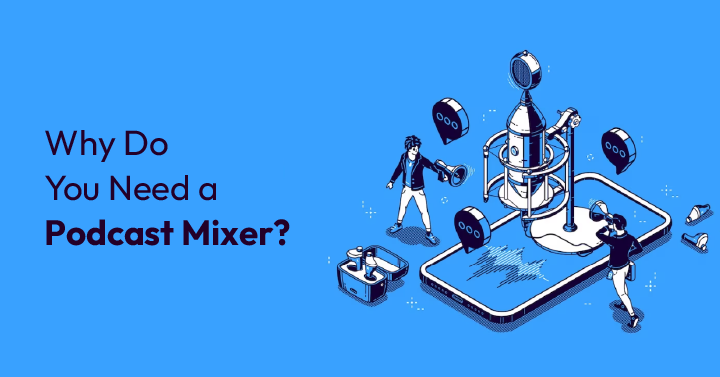
2.1 For Multichannel Control
One of the principal benefits of a podcast mixer is that it allows you to control each audio channel separately.For example, if you want to adjust the volume of a particular person’s mic without affecting anybody else’s sound, you can do that using a mixer’s faders or knobs.
2.2 Mix-Minus
If your co-host or guest is in a different location from yourself, you’ll most likely be recording over a platform like Zoom or Skype. This can create a feedback issue, where the person participating remotely will hear themselves speaking in echo. A mix-minus setup prevents this through an Aux Out (auxiliary out) or FX Send (effects send) output. This removes a remote podcast participant’s voice from what they hear through the communications software.
2.3 Mix Sounds
As any experienced podcaster will tell you, it’s much easier to fix sound issues while you’re recording than later during editing. Mixers have a range of knobs that allow you to correct some common problems. For instance, the low-cut filter removes noises from the background that are below a certain frequency
2.4 For Connecting Professional Gear
A lot of professional microphones have XLR cables, which won’t connect directly to your computer. Instead, you’ll need an audio mixer (or an audio interface) to act as a middleman between the mics and your digital audio workstation (DAW).
2.5 For Real-time Audio Enhancements
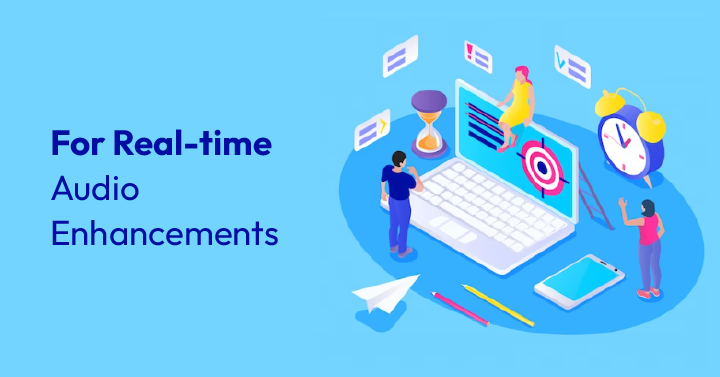
You can plug-in audio inputs other than microphones into your mixers. These can allow you to add music, sound effects, or other kinds of audio elements to your podcast as you record. If you have the multitasking skills for it, this will save you time down the road during post-production.
3. Things to Look for in a Podcast Mixer
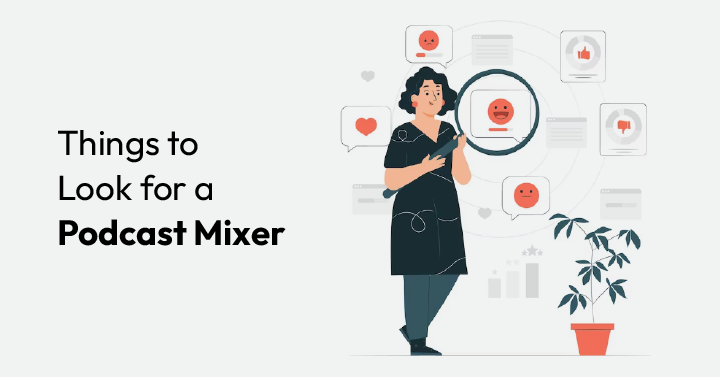
3.1 Number of Channels
The simpler the mixer, the fewer inputs and channels it will have. There is a huge variation in the number of channels a device can offer, from a basic device with 2 to a hugely complex one with 128. Realistically, your podcast probably won’t require more than 6, though this depends on how many people you intend to have to speak on your show at one time, whether you want the option of having remote guests, and if you decide to include sound effects.
3.2 FX Send or Aux Out
Some mixers have FX Send or Aux Out outputs. These are essentially two different terms for the same thing. As discussed above, these outputs are enormously useful if you intend to have remote speakers participating in your podcast, as they allow you to avoid feedback issues and separately adjust their audio in real-time.
3.3 Control Types
Audio mixers usually have two main types of control: knobs (also sometimes called dials) and faders (also known as sliders). Cheaper devices tend to rely more on knobs than faders, though faders can provide more delicate control. Ultimately, though, what you choose will partly be down to cost and partly down to personal preference
3.4 Other Advanced Processing Features
We’ve already mentioned low-cut filters (also known as high-pass filters), but other processing features you can find on a mixer include EQ (equalization) and gain. You can also opt for models that provide you with the ability to affect compression and reverb. It’s not uncommon for mixers to have built-in sound effects buttons, too
4. 10 Best Podcast Mixers on the Market
4.1 Zoom PodTrak P4
Designed with podcasters in mind, the Zoom PodTrak P4 is a compact, handheld recorder that can double as a mixer. Easily transportable, it comes with 4 mic inputs with XLR connectors, each one with its own gain control knobs, mute buttons, and phantom power switches. Complementing these 4 mic sockets are 4 headphone outputs, as well as 4 sound pads that can be assigned sound effects from a preset selection of 11.
The device has an automatic mix-minus function built in, so you don’t need to worry about an FX Send/Aux Out socket. Plus, you can store your recording onto an SD card using the memory slot or transfer it to your device using the podcast mixer USB port. Compared to some of the other quality options on the market, it’s a relatively budget podcast mixer.
Price: $219.99.
4.2 Rode RodeCaster Pro
The RodeCaster Pro is another mixer designed specifically with podcasters in mind. It may not be as portable as the PodTrak 4, but it does come with greater functionality, including more powerful built-in processing (compressor, noise gate, high-pass filter) as well as 8 customizable sound pads.
Faders are used to control each of the 4 XLR mic inputs plus the Smartphone, USB, and Bluetooth channels, which have been optimized for remote calls with automatic mix-minus. You can choose to record to a microSD or computer in multitrack or stereo.
Price: $599.
4.3 Yamaha MG10XU
Yamaha has a whole series of MG models that vary in complexity and features. The MG10XU is on the simpler end but still has all you’d need for most podcast setups – perhaps too much, given it has numerous inputs and outputs designed more for recording music. Various knobs allow you to control gain, compression, EQ, and panning.
There are 4 mic inputs and an Aux Out socket, but just 1 headphone output, so you’d have to buy a splitter if your podcast has a co-host or in-person guests.
Price: $350.
4.4 Behringer Xenyx X1204USB
The Xenyx X1204USB is another model that offers you more control over your sound, though as it’s an older model, it comes at a cheaper price. The 4 phantom-powered mics with built-in preamps have faders to control volume and knobs for compression, EQ, and gain.
The FX processor has 16 editable presets, as well as line-ins for other sound effects, but just one headphone socket.
Price: $209.
4.5 The Mackie 402VLZ4
With 2 preamp mics, the Mackie 402VLZ4 is ideal for podcasts with a pair of hosts or one guest and one host. Features include EQ and low-cut filter dials, but no Aux Out function, meaning no mix-minus effect. There’s also only one headphone out, which isn’t ideal.
What the Mackie 402VLZ4 lacks in features, it makes up for in price. It’s the most affordable option on this list and a good starting point for those who don’t need too much flexibility.
Price: $129.98
4.6 Allen & Heath ZEDi-10
The ZEDi-10’s four mics come with gain control, a low-cut filter, and EQ for high, mid and low frequencies. While it does only have one headphone socket, the USB interface means you can easily connect to your computer device without a separate device.
FX Out and associated dials allow you good control over any external effects you want to apply to your audio.
Price: $319.99.
4.7 Soundcraft Signature 12MTK Multi-Track Mixer
If you want a podcast mixer set up with lots of input channels, the Signature 12MTK is a solid option. This is a pretty serious piece of hardware, which is suited for more experienced podcasters who have a greater knowledge of sound settings. Each of the 8 preamp mics has its own volume faders and numerous dials to control EQ, panning, and gain.
Rounding out the features are low-cut filters, 3 auxiliary outputs, and a USB interface. Still only one built-in headphone jack though.
Price: $726.66.
4.8 Mackie ProFX6v3
The Mackie ProFX series has a wide range of products to offer, but the ProFX6v3 is the most compact and affordable option. This mixer boasts two mic inputs with preamps, each with its own low-cut filter and EQ knobs.
This device comes with its own GigFX effects engine, which provides 24 preset effects to adjust the tone of the recording. There’s also a USB socket to connect to your computer, which has built-in latency-free direct monitoring.
Price: $169.99
4.9 Yamaha AG03MK2
Nodding to the needs of solo podcasters, the AG03 Mark 2 has a single mic input and headphone output, as well as the option to record via headset instead. The paired back control panel includes a 60mm fader, a knob for gain, and buttons to alter reverb and EQ.
A 4-pole mini jack (TRRS) for smartphone input allows you to add music or sound effects from your phone as you record. Plus, there’s USB connectivity to link the mixer to the computer.
Price: $216.
4.10 TC Helicon Go XLR
This easily portable, stylish little number has somehow managed to squeeze volume faders for 4 channels, as well as knobs to control reverb, pitch, and echo. Designed for streamers, the interface allows you to mix samples as you record for later use, as well as utilize certain sound effects. However, it’s mainly for one-man bands, so only has a single mic input and a single headphone output (you can alternatively rely on a headset).
Ports include one for USB and one for gaming. Bear in mind this model is primarily designed for Microsoft devices and does not have support for macOS or Linux operating systems.
Price: $499.99
5. FAQs
- Should you use a mixer for a podcast?
Mixers can take the audio quality of your podcast to a higher level. Plus, it means you have greater control over the sound of your podcast as you record it, rather than having to worry about doing a lot of editing with podcast mixer software.
- Do you need a mixer for a 2-person podcast?
A mixer is useful for making tweaks to podcasts regardless of the number of people. Even if it’s just you riding solo, a mixer means more live control. However, the fewer people or additional audio inputs you have, the less essential a mixer becomes, as you will have fewer feeds to juggle and balance.
- Can you record a podcast without a mixer?
Absolutely, though if you have mics with XLR cables you will most likely require some kind of audio interface to act as the conduit between your microphones and your computer. However, it is possible to do without any kind of mediating device entirely if you work solely with USB mics that connect directly to your PC or laptop.

